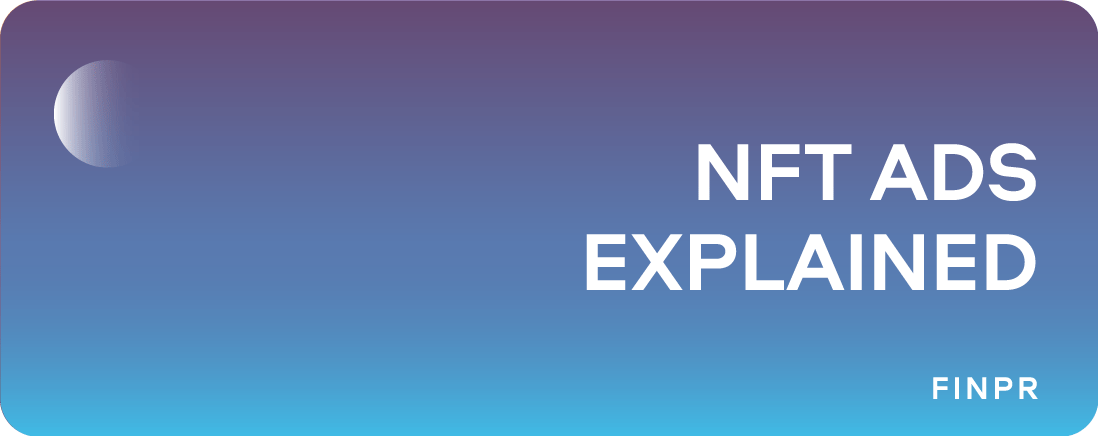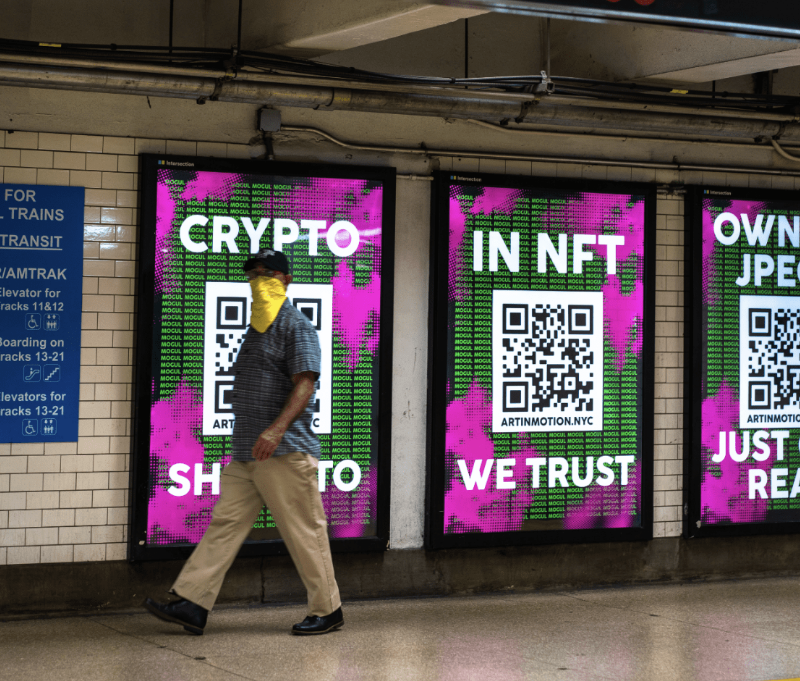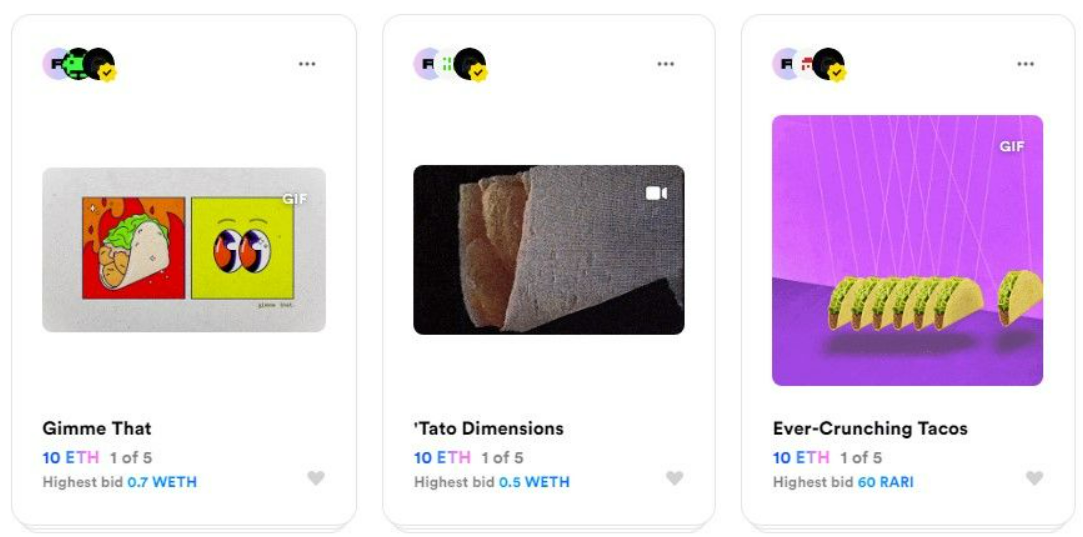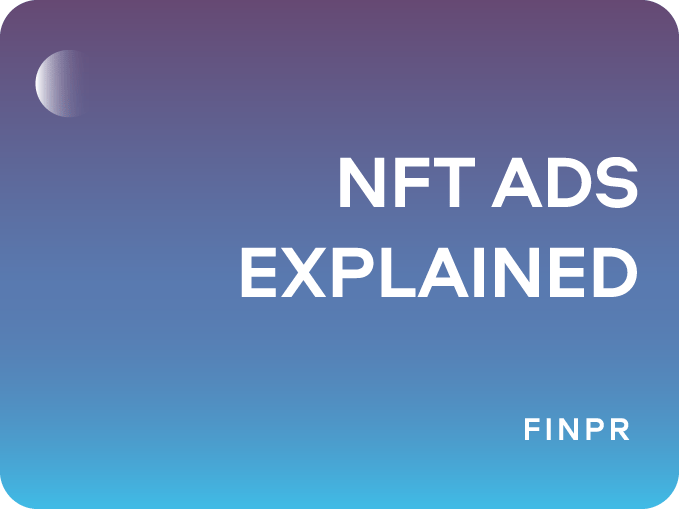
As marketers and advertisers seek innovative ways to capture audience attention and deliver impactful messages, one of the most promising developments has been the emergence of Non-Fungible Tokens (NFTs). NFTs, which represent unique digital assets verified using blockchain technology, have sparked a revolution across various industries, from art and entertainment to real estate and gaming. Now, they are poised to redefine the future of digital advertising.
By integrating the principles of NFTs into digital advertising, brands can create highly engaging, personalized, and interactive ads that resonate with their audiences on a deeper level. NFT advertising holds the potential to revolutionize how brands connect with consumers, offering enhanced transparency, security, and engagement.
As we delve into the concept of NFT ads, we will explore their mechanics, benefits, and how they compare to traditional advertising methods. This article aims to provide a comprehensive understanding of NFT ads and their transformative potential in the digital advertising landscape.
Understanding NFT Ads
NFT ads are a revolutionary new form of digital advertising that leverage the unique properties of NFTs to create engaging, verifiable, and collectible ad content. To fully appreciate the potential of NFT ads, it’s important to understand how they work, their various types, and the benefits they offer to both advertisers and consumers.
Definition and Concept of NFT Ads
NFT ads are digital advertisements that utilize NFTs to provide a unique, authenticated, and often interactive advertising experience. Unlike traditional digital ads, which are easily replicable and often seen as intrusive, NFT ads offer a new level of engagement by turning advertisements into valuable digital assets. These assets can be collected, traded, or interacted with in various ways, providing an innovative approach to capturing consumer attention.
NFT ads harness the power of blockchain technology to verify the authenticity and ownership of the ad content. This verification process ensures that each ad is unique, tamper-proof, and transparent. For consumers, this means that owning or interacting with an NFT ad can provide a sense of exclusivity and value, transforming the ad from a mere marketing message into a collectible digital item.
How NFT Ads Work
NFT ads operate by embedding advertisements into NFTs, which are then distributed through various digital channels. The process typically involves the following steps:
- Creation: Advertisers design a digital advertisement, which could be a static image, a video, an animation, or an interactive experience.
- Tokenization: The digital ad is converted into an NFT using blockchain technology. This process involves creating a unique token that represents the ad and recording its details on the blockchain.
- Distribution: The NFT ad is distributed through digital platforms, social media, or marketplaces. Consumers can view, interact with, and even purchase or collect these ads.
- Interaction and Engagement: Consumers interact with the NFT ad, which could involve viewing the ad, participating in an interactive experience, or purchasing the NFT to add to their digital collection.
- Verification and Ownership: The blockchain verifies the authenticity and ownership of the NFT ad, ensuring transparency and security.
Types of NFT Ads
NFT ads can take various forms, each offering different levels of engagement and interactivity:
- Static NFT Ads: These are digital advertisements in the form of static images or graphics. They can be collected and owned by consumers, providing a unique way to engage with the brand.

- Animated NFT Ads: These ads include animations or short videos that offer a more dynamic and visually appealing experience. They can be more engaging than static ads and are often used to tell a brand story or highlight key features.
- Interactive NFT Ads: These ads involve interactive elements that allow consumers to engage with the content in real-time. Examples include gamified ads, virtual reality experiences, or ads that change based on user input.
- Collectible NFT Ads: These ads are designed as limited-edition collectibles, encouraging consumers to collect and trade them. This approach leverages the scarcity and exclusivity of NFTs to drive engagement and interest.
Benefits of NFT Ads
NFT ads offer numerous benefits that make them a compelling choice for modern advertisers:
- Increased Engagement: NFT ads provide a more engaging and interactive experience compared to traditional ads, capturing consumer attention more effectively.
- Ownership and Uniqueness: By turning ads into NFTs, brands can offer consumers a sense of ownership and exclusivity, enhancing the perceived value of the ad.
- Transparency and Security: Blockchain technology ensures that NFT ads are transparent and secure, reducing the risk of ad fraud and ensuring authenticity.
- Higher ROI: The unique and engaging nature of NFT ads can lead to higher return on investment by driving more meaningful interactions and conversions.
Understanding NFT ads involves recognizing their potential to transform digital advertising by offering new ways to engage consumers and deliver value. As we continue to explore this innovative approach, it’s clear that NFT ads hold the promise of revolutionizing how brands connect with their audiences in the digital age.
NFT Ads vs Traditional Ads
Understanding the differences between these two approaches is essential for marketers looking to maximize their advertising effectiveness. Here, we compare NFT ads and traditional ads across several critical dimensions.
Comparison of Cost-Effectiveness
Traditional Ads
- Costs: Traditional digital ads, such as banner ads, social media ads, and video ads, often incur recurring costs. These include expenses for ad space, pay-per-click (PPC) fees, and ongoing campaign management.
- ROI: The return on investment (ROI) for traditional ads can vary significantly based on factors such as targeting accuracy, ad quality, and competition. High ad spend does not always translate into high ROI due to ad fatigue and increasing consumer resistance.
NFT Ads
- Costs: The initial creation of NFT ads can be higher due to the need for unique design and tokenization. However, these costs are often one-time expenses.
- ROI: NFT ads have the potential for a higher ROI due to their unique and engaging nature. The collectible aspect can create long-term value and continued consumer engagement without the need for constant ad spend.
Differences in Audience Targeting and Reach
Traditional Ads
- Targeting: Traditional ads rely heavily on data-driven targeting techniques, using demographic, behavioral, and psychographic data to reach specific audiences. Platforms like Google and Facebook provide robust tools for precise audience targeting.
- Reach: These ads can achieve wide reach through extensive distribution networks, ensuring visibility across multiple channels and platforms.
NFT Ads
- Targeting: NFT ads can also utilize data-driven targeting but add an additional layer of personalization through unique and exclusive content. They appeal to niche markets and communities that value digital ownership and collectibility.
- Reach: While the initial reach of NFT ads might be narrower compared to traditional ads, their potential for viral spread through social sharing and secondary markets can significantly amplify their reach.
Analysis of Ad Performance Metrics
Traditional Ads
- Metrics: Performance metrics for traditional ads include impressions, clicks, click-through rates (CTR), conversions, and return on ad spend (ROAS). These metrics provide quantitative data on ad effectiveness but often lack qualitative insights.
- Limitations: Issues like ad fraud, bot traffic, and inaccurate reporting can skew these metrics, leading to less reliable performance assessments.
NFT Ads
- Metrics: NFT ad performance can be measured through engagement metrics such as interaction rates, ownership transfers, and secondary market sales. These metrics offer a more comprehensive view of consumer interest and engagement.
- Advantages: The transparent and immutable nature of blockchain technology ensures the accuracy of these metrics, reducing the risk of fraud and providing more reliable data.
Long-Term Value and Retention
Traditional Ads
- Value: Traditional ads typically provide short-term value, aiming to drive immediate actions such as clicks, leads, or sales. Their impact diminishes quickly once the ad campaign ends.
- Retention: Sustaining consumer interest requires continuous ad spending and campaign refreshes, leading to higher long-term costs.
NFT Ads
- Value: NFT ads offer long-term value through their inherent collectibility and uniqueness. Consumers who acquire NFT ads gain a sense of ownership, which can lead to ongoing engagement and loyalty.
- Retention: The collectible nature of NFT ads encourages repeated interactions, fostering a deeper connection with the brand and sustained consumer interest over time.
While traditional ads are effective for broad reach and immediate results, NFT ads offer unique benefits that cater to modern consumers' desire for personalization, exclusivity, and engagement.
Creating Effective NFT Ads
Best Practices for Leveraging Blockchain Technology
Choosing the Right Blockchain
- Ethereum: Popular for NFTs due to its robust ecosystem and support for smart contracts, but can be costly in terms of gas fees.
- Alternative Blockchains: Consider blockchains like Binance Smart Chain, Flow, or Polygon, which offer lower fees and faster transactions.
Ensuring Security and Authenticity
- Smart Contracts: Use smart contracts to automate and secure transactions. Ensure the contract is well-audited to prevent vulnerabilities.
- Provenance Tracking: Utilize blockchain’s transparent ledger to track the provenance of each NFT ad, ensuring authenticity and building trust with consumers.
Environmental Considerations
- Sustainable Practices: Opt for blockchains that prioritize sustainability or have lower environmental impact. Highlight these efforts in your marketing to appeal to eco-conscious consumers.
Case Studies of Successful NFT Ad Campaigns
Example 1: Taco Bell NFT GIFs
- Campaign Overview: Taco Bell released a series of NFT GIFs that sold out within minutes. The proceeds were donated to the Live Más Scholarship, combining marketing with a cause.

- Key Takeaways: The campaign leveraged scarcity, brand loyalty, and philanthropy, demonstrating how NFTs can engage consumers and support social causes.
Example 2: Coca-Cola Virtual Wearables
- Campaign Overview: Coca-Cola auctioned virtual wearables as NFTs to celebrate International Friendship Day, raising funds for Special Olympics International.
- Key Takeaways: By combining digital fashion with a charitable cause, Coca-Cola created a unique and impactful campaign that resonated with both collectors and the general public.
Tools and Platforms for Creating NFT Ads
Design Tools
- Adobe Creative Cloud: Comprehensive suite for creating high-quality graphics, animations, and interactive content.
- Blender: Open-source tool for creating 3D models and animations, useful for more complex NFT designs.
NFT Marketplaces
- OpenSea: One of the largest NFT marketplaces, offering extensive reach and tools for minting and selling NFTs.
- Rarible: A community-owned marketplace that allows for easy creation and trading of NFTs, with a focus on decentralization.
- Foundation: A platform known for high-quality, curated art NFTs, suitable for brands looking to position their ads as premium collectibles.
Blockchain Platforms
- Ethereum: The most widely used platform for NFTs, offering extensive tools and community support.
- Polygon: A layer-2 solution for Ethereum that provides lower fees and faster transactions, making it ideal for high-volume campaigns.
- Flow: Designed specifically for digital collectibles and large-scale applications, used by platforms like NBA Top Shot.
Integrating NFT Ads into Marketing Strategies
Steps to Incorporate NFT Ads into Existing Marketing Plans
1. Define Objectives
- Identify Goals: Clearly outline what you aim to achieve with your NFT ads. This could include increasing brand awareness, driving engagement, generating revenue, or building a community.
- Key Performance Indicators (KPIs): Establish specific KPIs to measure the success of your NFT ad campaigns, such as engagement rates, conversion rates, and ROI.
2. Understand Your Target Audience
- Demographics and Interests: Conduct research to understand the demographics, interests, and behaviors of your target audience. Determine if they are familiar with NFTs and blockchain technology.
- Segmentation: Segment your audience based on their familiarity with NFTs. Tailor your messaging to educate and engage different segments appropriately.
3. Develop a Creative Concept
- Unique Value Proposition: Create a compelling value proposition for your NFT ads. Highlight the uniqueness, exclusivity, and benefits of interacting with or owning your NFT ads.
- Creative Design: Design visually appealing and interactive NFT ads that align with your brand’s identity. Consider collaborating with digital artists or creators to enhance the creative appeal.
4. Choose the Right Platform
- NFT Marketplaces: Select appropriate NFT marketplaces (e.g., OpenSea, Rarible, Foundation) based on your target audience and campaign goals.
- Blockchain Networks: Choose a blockchain network (e.g., Ethereum, Polygon, Flow) that best suits your technical needs and budget considerations.
5. Launch and Promote
- Marketing Channels: Promote your NFT ads through various marketing channels, including social media, email marketing, influencer partnerships, and online communities.
- Engagement Campaigns: Run campaigns that encourage users to engage with your NFT ads, such as contests, giveaways, or exclusive access events.
Identifying the Target Audience for NFT Ads
Early Adopters and Tech Enthusiasts
- Characteristics: These individuals are usually well-versed in blockchain technology and are early adopters of new digital trends. They are likely to be collectors and investors in the NFT space.
- Strategies: Use technical language and highlight the blockchain aspects of your NFTs. Emphasize uniqueness, scarcity, and investment potential.
Brand Loyalists
- Characteristics: These are consumers who are already loyal to your brand and are highly engaged with your products or services.
- Strategies: Offer exclusive NFT ads that tie into your brand’s narrative or major product launches. Use emotional storytelling to create a deeper connection.
General Consumers
- Characteristics: This segment might be less familiar with NFTs and blockchain technology but are interested in innovative and engaging digital experiences.
- Strategies: Educate this audience through simple and clear messaging. Highlight the benefits of NFT ownership and how it enhances their interaction with your brand.
Collaborating with Artists and Creators
Finding the Right Collaborators
- Relevance: Choose artists and creators whose style and audience align with your brand values and target demographic.
- Reputation: Partner with reputable artists who have a strong following in the NFT community to add credibility and appeal to your campaign.
Co-Creation Process
- Creative Brief: Provide a detailed creative brief outlining your brand’s vision, goals, and expectations for the NFT ads.
- Collaboration: Work closely with artists during the creation process to ensure the final product aligns with your brand identity and marketing objectives.
The Final Verdict
The integration of NFT ads into the digital advertising landscape represents a transformative shift that holds significant promise for brands looking to engage consumers in innovative and meaningful ways.
NFT ads offer unique opportunities to engage consumers, build brand loyalty, and achieve higher returns on investment. By understanding and harnessing the potential of NFT ads, brands can navigate the future of digital advertising with creativity and confidence, positioning themselves at the forefront of this exciting technological revolution.




